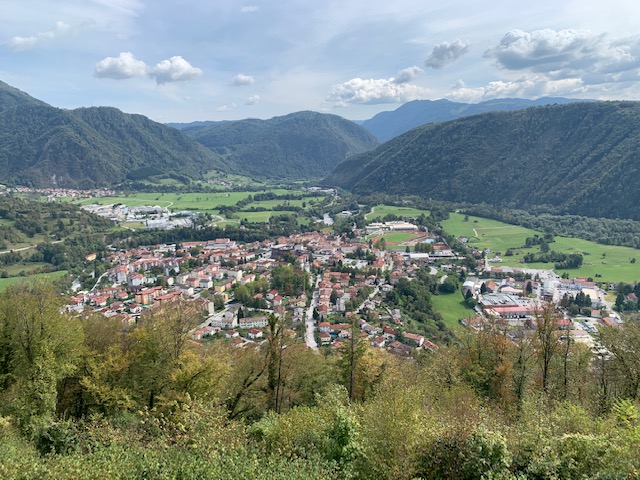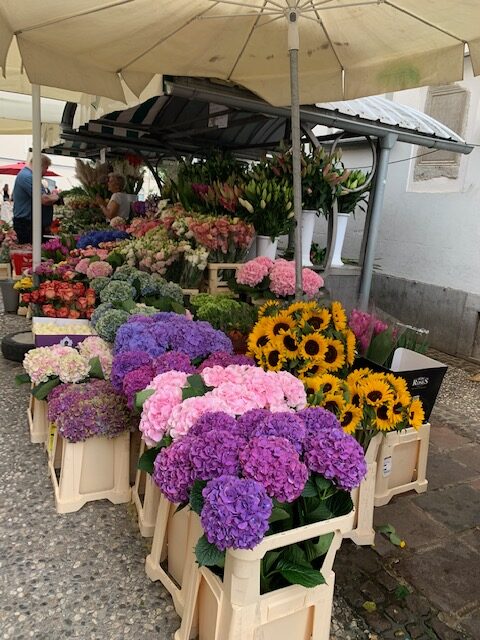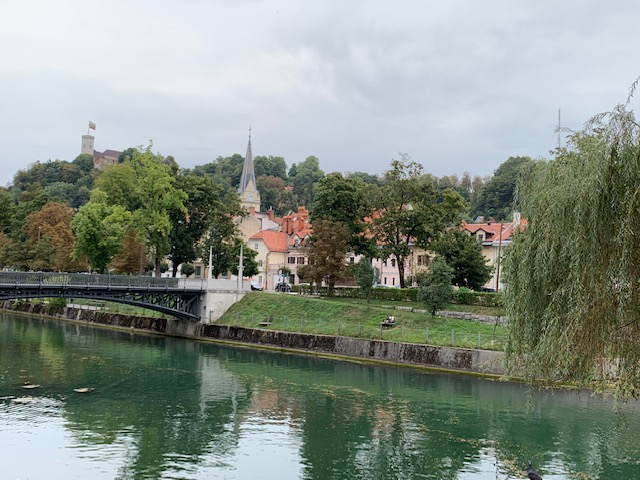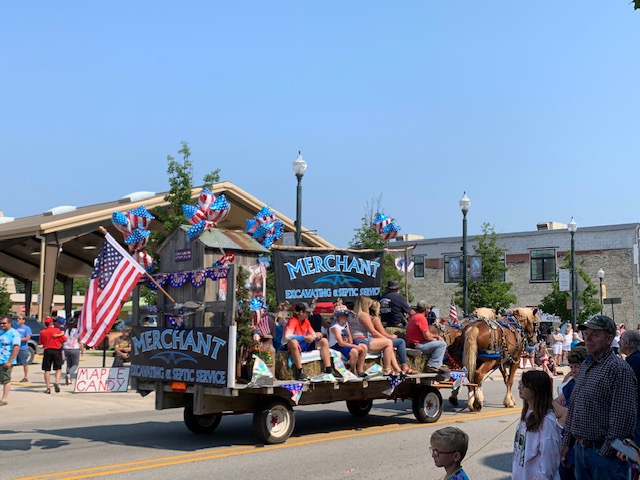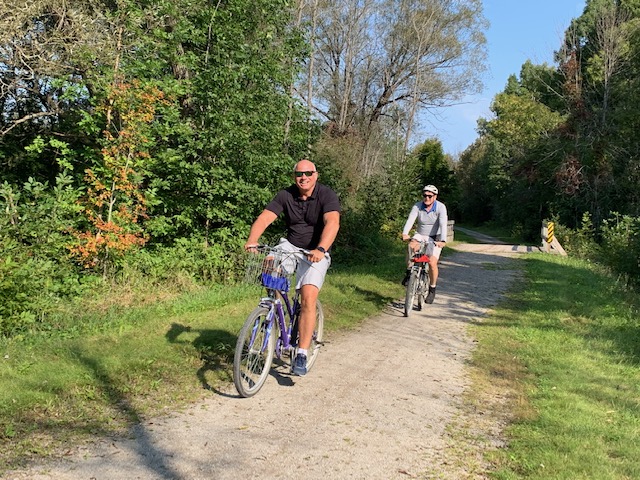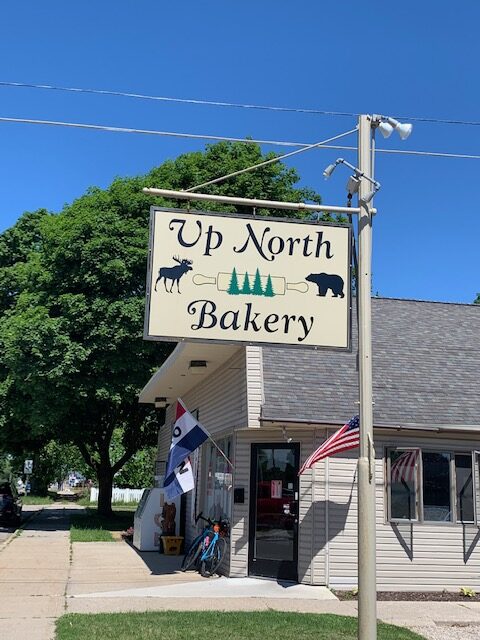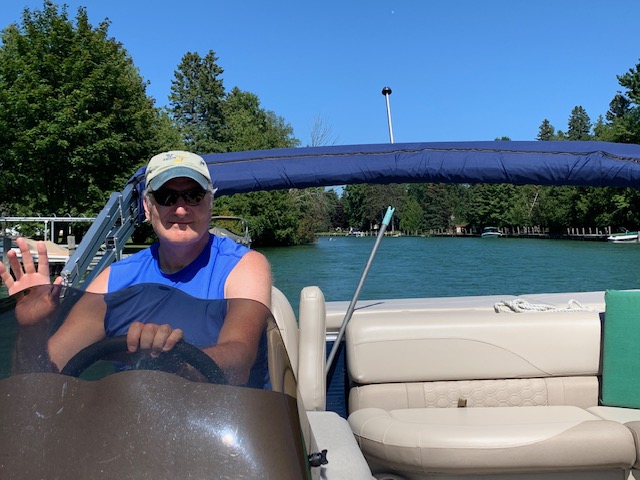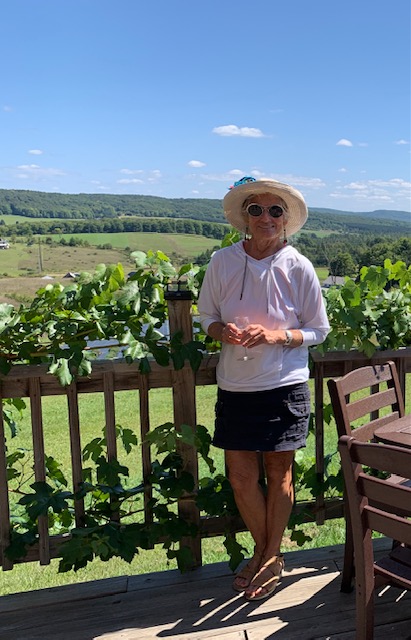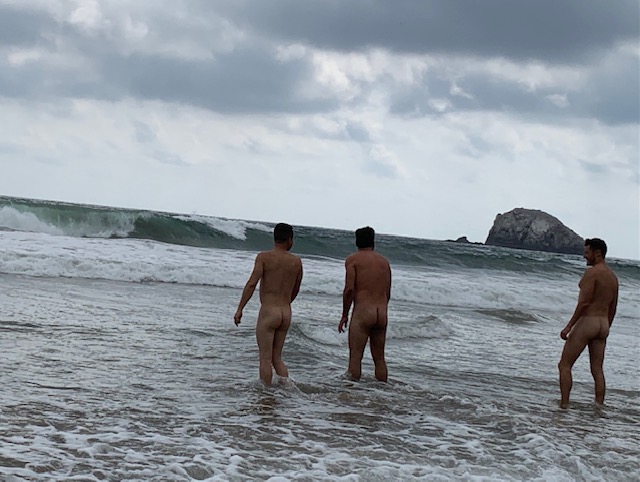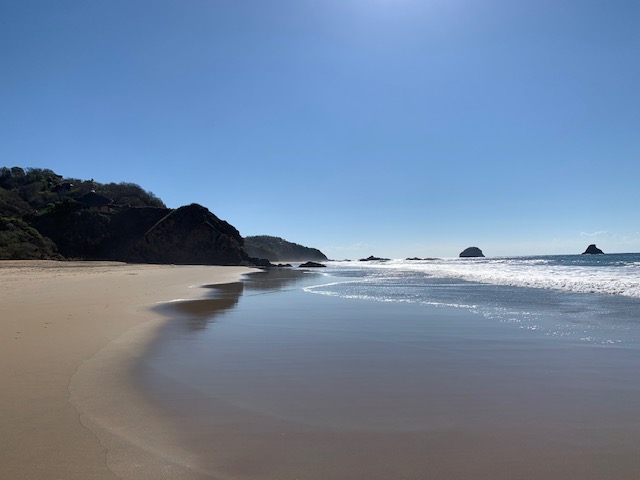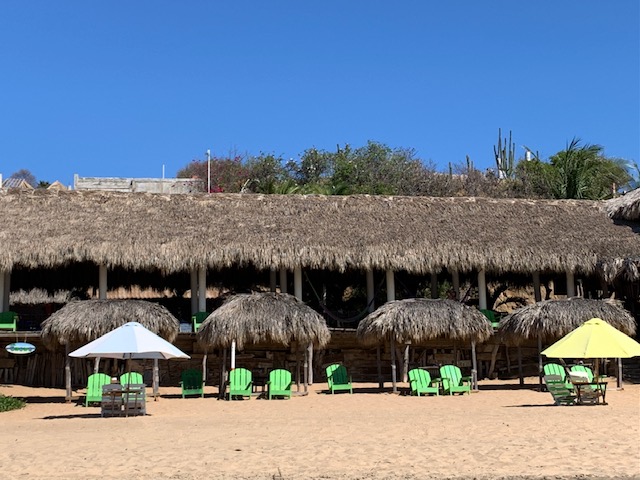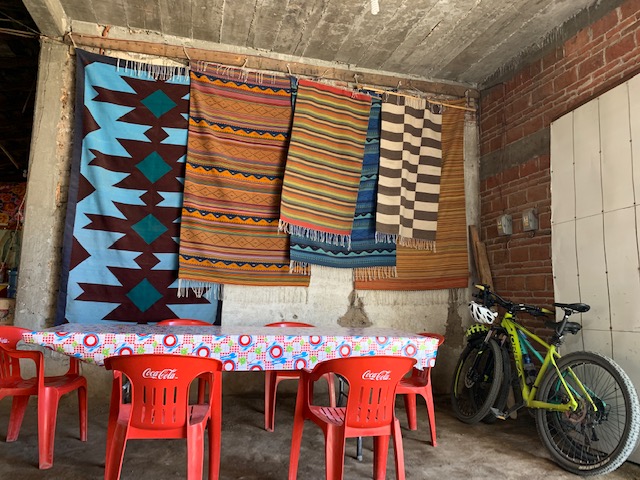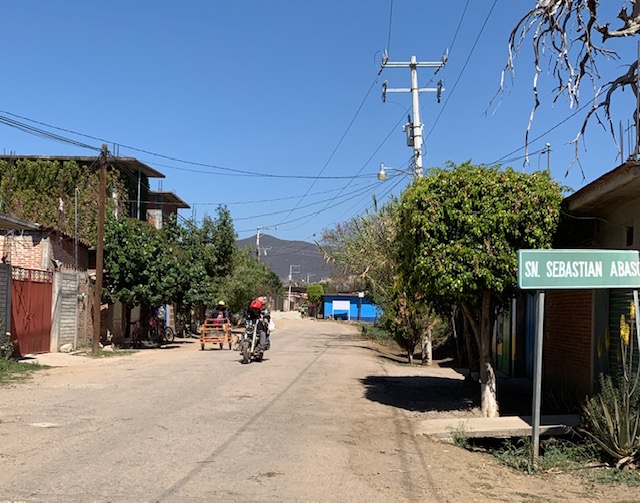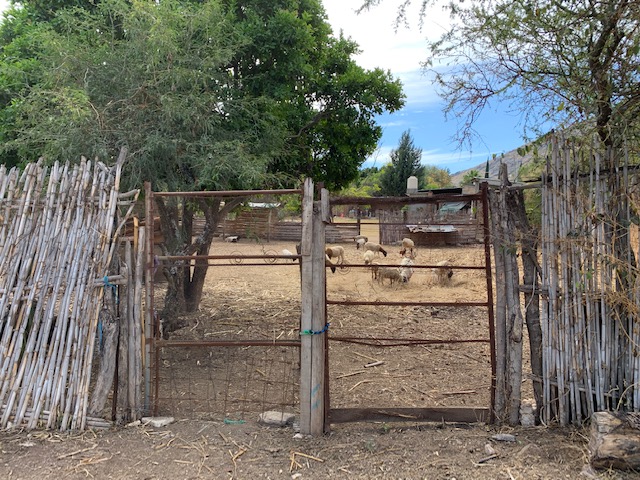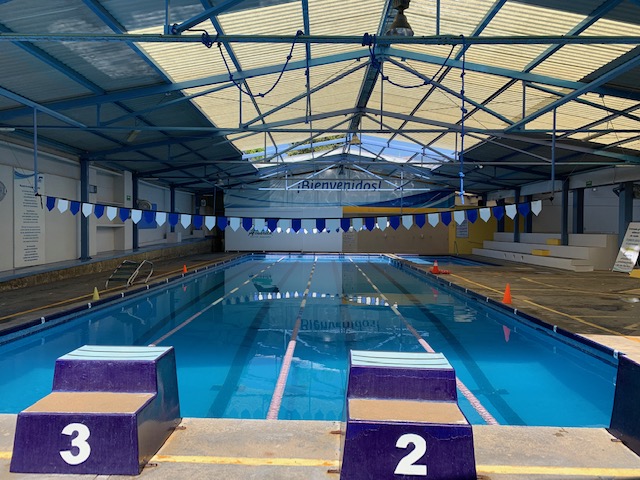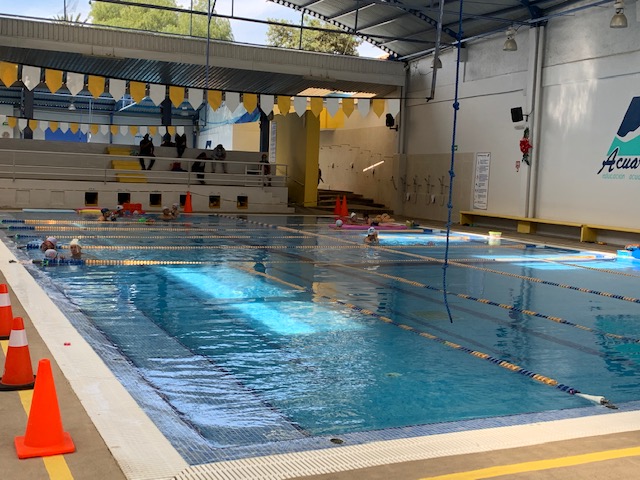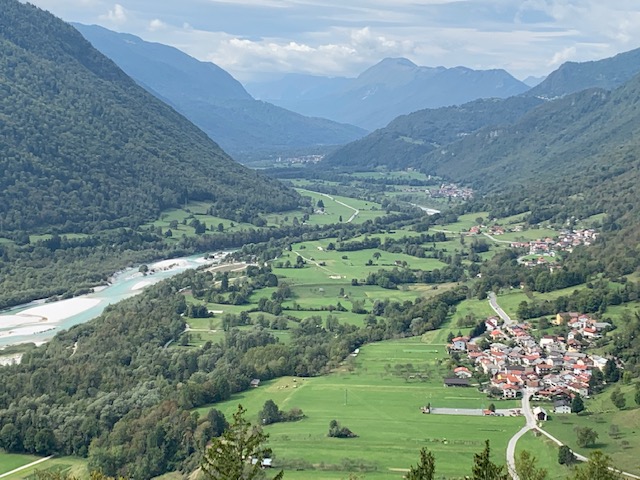
Opted for a week in the small town of Tolmin, located in the Soca River Valley of the Julian Alps near the Italian border, upon the advice of our walking tour guide in Ljubljana, to avoid the commercialization and tourists in the Lake Bled area. Our Apartment Maruska was on the third floor of a home owned by Lado and Maruska and managed by their daughter Lada – who brought us fresh eggs from their chickens, homemade jam and a honey/herbed elixir. We have fabulous mountain views in the best equipped apartment I have experienced.


Tolmin is a hub for serious outdoor activities (hang gliding, cycling, river rafting, canyoning, trekking and more). It has the best little tourist information office, staffed by Petra, who helped us rent our apartment, coordinate all the bus and train schedules and rent bikes from Samo at AZNUT Adventures – all within 4 blocks of our apartment. I said it was a small town and we loved it.
Our adventures included a hike up to the local gorge on the Tolminska river.


The Bavarian countryside, dotted with sheep, goats and the clanging of cow bells made me break out into song from the Sound of Music. Window boxes are stuffed with flowers and each house has a vegetable/flower garden filling the small yards. Steepled white churches grace every town. The abundant river water here is renowned for its emerald/turquoise color and clarity.


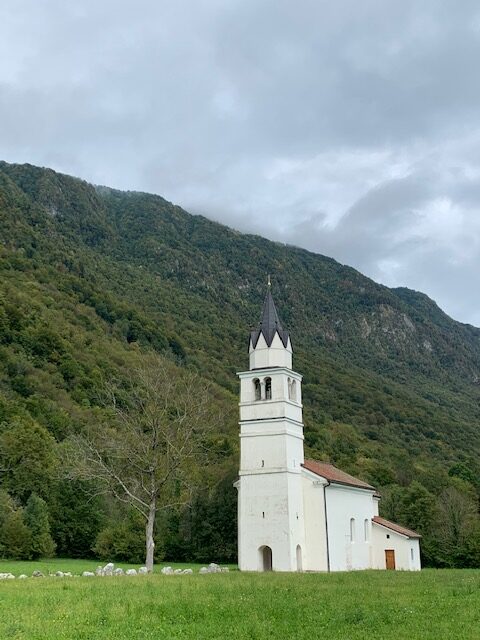
Next was a fabulous cycle up the Soca River valley through small, rural hamlets, over the Soca gorge to the town of Kobaird, stopping to hike the Kozjak waterfalls (a series of six waterfalls culminating with a secluded 15meter white water column surrounded by unforgettable scenery).
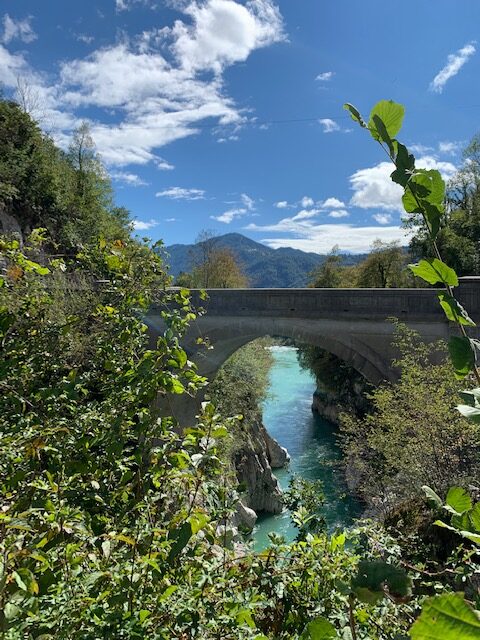

Before our return cycle to Tolmin we Indulged in a house special of roast pig for lunch and the local Laska beer. The food and the people here are hearty – with very little obesity.

Oh my….so indulgent
My first ebike excursion (there are some serious hills here!!) was cycling south to Kamal for a wonderful lunch of traditional local soup (cabbage, onions, mushroom base), fresh Soca River trout, french fries and more Laska.
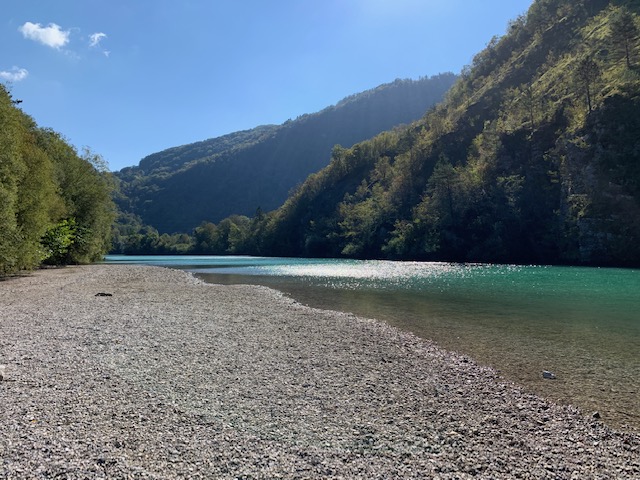

A short, but steep hike up to the 11th century castle ruins atop Kozlov Rob, provided stunning views of Tolmin and the Soca River Valley.
